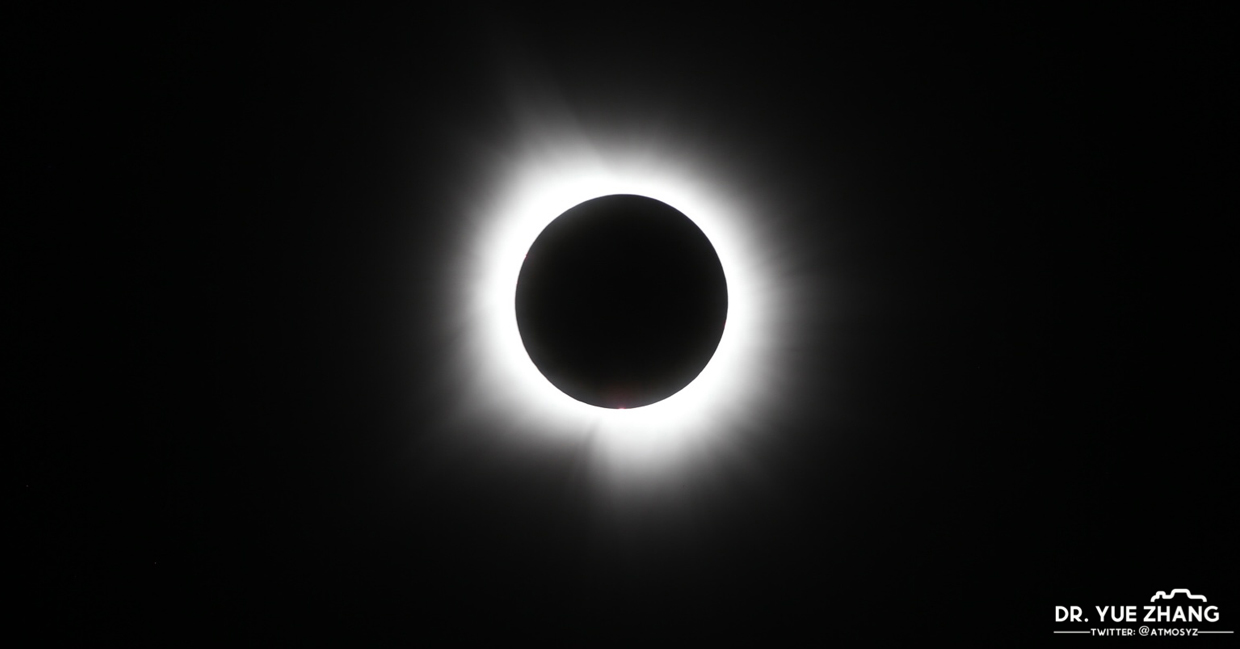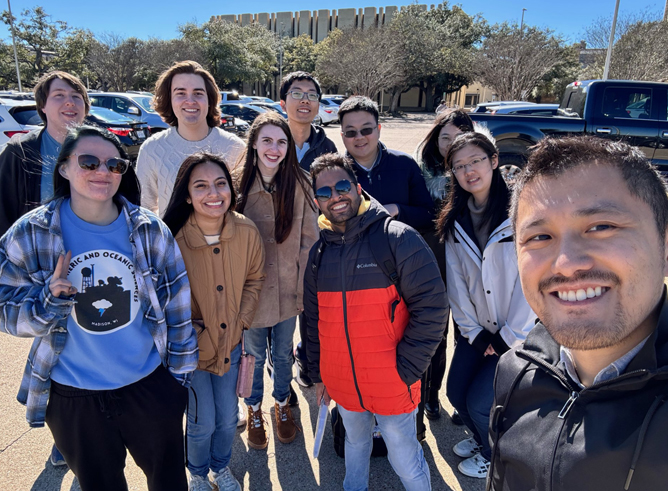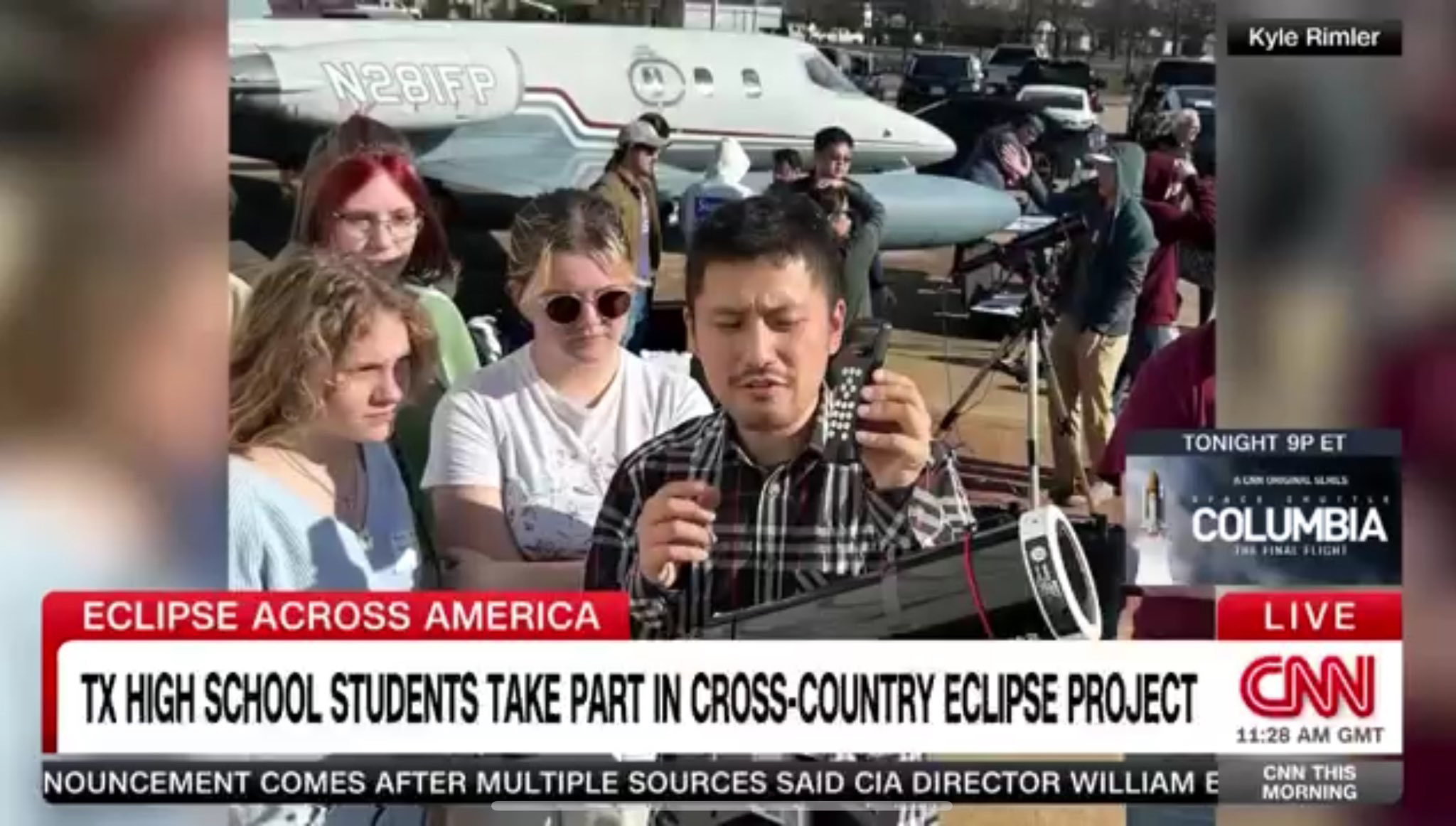
On April 8, students across the Texas A&M University campus paused their studies to witness a rare spectacle — the Great American Solar Eclipse. This extraordinary event, in which the moon completely obscured the sun, swept across a large swath of the United States, making for a memorable day for millions within the path of totality that stretched from Texas through the Midwest to Maine.
Although Aggieland experienced only 99% totality, Texas A&M students, faculty and staff were able to take in the longest and darkest total solar eclipse in the US since the early 19th century. By contrast, the most recent total solar eclipse visible in Bryan-College Station in 2017 resulted in about 70% totality. By any standard, however, the remarkable occurrence was a unique opportunity, given that the next total solar eclipse visible from the US won't occur until 2044.
The nationwide event was extra special for 12 Aggies who had dedicated nearly a year to preparing for #SolarEclipse2024 Day by coordinating a national citizen-run experiment. The Citizen Continental America Telescopic Eclipse (CATE) 2024 project, backed by funding from the National Science Foundation (NSF) and National Aeronautics and Space Administration (NASA), deployed 35 telescope setups along the path of totality, each manned by groups of community scientists.
Faculty and students from the Department of Atmospheric Sciences played a crucial role in co-organizing the citizen science project, an impressive collaborative effort involving academic institutions, high schools and community organizations nationwide. The initiative aimed to spark interest in learning about telescopes and eclipses, engaging the broader community and their curiosity about the eclipse phenomenon.

Dr. Yue Zhang, an assistant professor of atmospheric sciences at Texas A&M, served as the Northern Texas state-level coordinator for this historic national scientific observation. He and the Texas A&M 12 were deployed to four sites in Northern Texas to help out local teams featuring high school students and teachers. In addition, a local Brazos Valley team primarily made up of Texas A&M personnel including graduate lecturer Judy Dickey worked in tandem with the Brazos Valley Museum of Natural History.
For Zhang, the preparation started in 2023, at which point he enlisted Texas A&M meteorology major Eden Thompson '25 to serve as a state trainer.
"The primary objective of our state trainer was to facilitate the training of community scientists at all observation sites in Texas," Zhang said. "Following the training, the team convened with other national teams in San Antonio to coordinate this significant national citizen event. It was a massive endeavor."
Following the national meeting in San Antonio, local high schools and nonprofit organizations were selected as the leading teams tasked with managing the eclipse at each observation site. In February, a two-day workshop was held in Dallas to provide comprehensive telescope training for each team focused on scientific research. Subsequent collaborative efforts within each team included conducting 3-4 practice sessions every other weekend to observe the sun while perfecting their craft as best as possible before the final eclipse observation along the path of totality.
This was more than an astronomical event. It's a testament to the power of community-driven research and how it can help us understand the mysteries of our universe.
Each team was equipped with a telescope, a dedicated camera capable of distinguishing polarized light from the sun’s corona, a laptop, various observation tools and educational materials to facilitate their participation in the groundbreaking experiment.
"Many of these schools and organizations had never experienced such immersive STEM activities," Zhang added. "This was not just about research; it was about inspiring and equipping future scientists."
The impact was profound. High schools and nonprofits along the eclipse path received unprecedented exposure, with media outlets like CNN, Forbes and The Washington Post highlighting their involvement. For many students and teachers, the experience proved to be a watershed moment, with many teachers describing it as one of the best experiences in their careers.

Beyond priceless memories and the chance to witness history, Zhang said the project left a far more tangible lasting legacy. Each telescope station has remained in its respective community, fostering ongoing interest in astronomy and scientific inquiry — in the Texas A&M team’s case, beginning with its debut at the 2024 Physics and Engineering Festival, held April 13 on the Texas A&M campus.
"Funding from esteemed institutions like the NSF and NASA underscores the importance of this initiative," Zhang said. "Organizers, including the Southwest Research Institute and partners such as Texas A&M's Atmospheric Sciences department have played pivotal roles, along with dedicated volunteers."
Looking ahead, Zhang says the project’s main research objective is to create a detailed video demonstrating how the sun's corona evolves. He intends to continue working with local teams to submit collected data and collaborate with the Southwest Research Institute and other broader scientific communities to deepen our understanding of the sun's corona. Additionally, he aims to engage more with high schools to improve science education.
"This was more than an astronomical event," Zhang said. "It's a testament to the power of community-driven research and how it can help us understand the mysteries of our universe."

